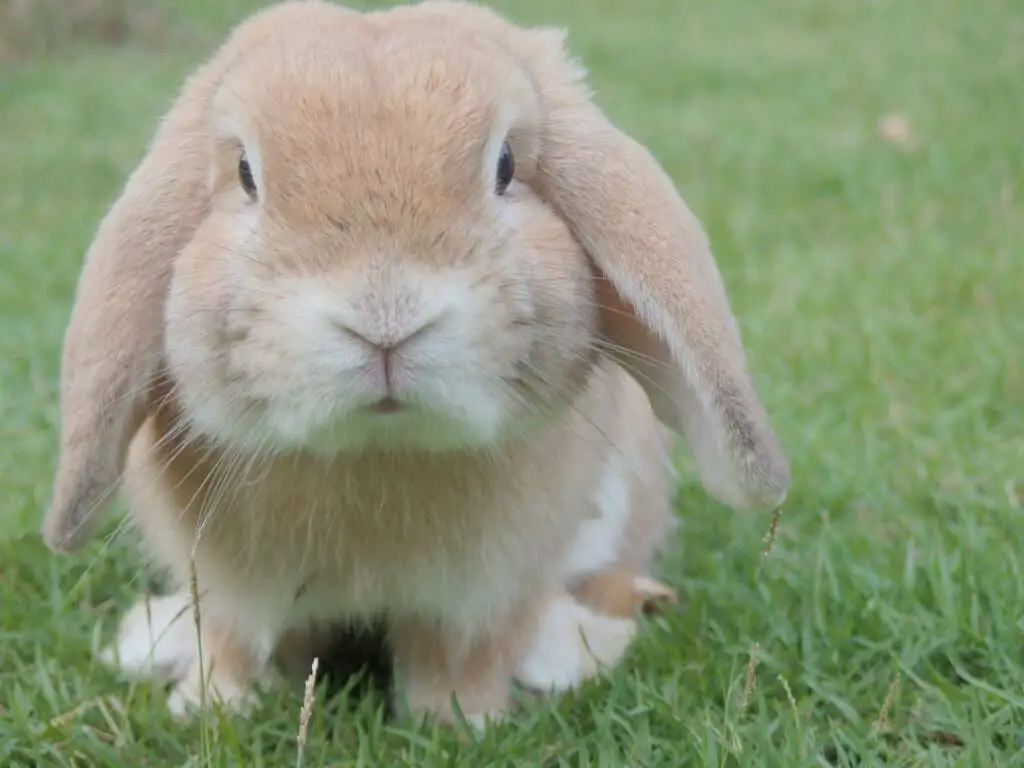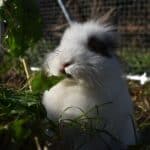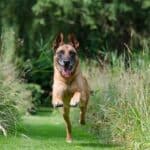
How to welcome the new dwarf rabbit to your family, how to familiarize him with other pets and his children?
Socializing the dwarf rabbit:
Acclimatizing kids to dwarf rabbit
Children want an animal that they can pet, take anywhere, that they can play with, and that is available to them. Rabbits certainly need contact, warmth and like to be petted. But they also need moments of tranquility, to be able to move without being constantly disturbed, which considerably limits the possibility of playing with them. This is where parents must intervene.
Explain to them that they should not disturb the animal when it is eating, nor take it out of the cage when it wants to rest or sleep, and that it should be left to run alone once a day. They should not expect the rabbit to jump after the ball or run up when it is whistled. But it will sometimes come spontaneously with a jump on your knees to beg for a hug and will know how to make itself understood without noise the body language .
Children often believe that what they like will appeal to their pets too. It is a mistake. Do not give out candy or chocolate. As for the trendy “hits”, the rabbit prefers to listen to them pianissimo. And he hates being stuck under his little master’s arm like a teddy bear, Be consistent, teach your child to be responsible for food, cleaning the cage , care and chores. He will learn something very important for his future life: to love someone is to be there for them, even when you don’t want to.
How to maintain the hygiene of the Dwarf Rabbit
Rabbits are exceptionally clean animals . It is therefore superfluous to bathe them. Sometimes a secretion with a sweetish odor can form around the genital opening which forms a scab. You can remove them with a little oil or lukewarm water. But you will have some extra care to give it:
How to take care of Coat of the Dwarf Rabbit
The coat o the dwarf rabbit must be brushed every two days at the time of moulting, with a brush that is not too hard. You will remove the dead hair, and that is, excellent for its circulation. Angora rabbits need a shearing every three months, which is vital.
How to take care of Teeth of the Dwarf Rabbit
Teeth of dwarf rabbit keep growing, so you have to give him the opportunity to wear them down. Provide him with hay, hard bread and small branches to gnaw on. If his teeth are too long, he will be embarrassed to eat. If you notice that he has trouble biting, you will need to take him regularly to the vet to have his teeth trimmed.
How to take care of claws of the Dwarf Rabbit
The claws of the dwarf rabbit in general they do not wear out enough because an apartment rabbit hardly has the opportunity to scratch. They may arch and push inward and he will be embarrassed to walk. Check them every two or three months and have them trimmed by the vet or your animal specialist. But you can also learn to do it yourself.
- To trim the claws, use special pliers that will not shatter them (they can be found in all pet stores).
- Take the rabbit on your lap, grab the first leg and push back the hairs a little. The front legs each have five claws, one of which is on the side. The hind legs have four claws.
- Trim only the tips, about 1/2 cm from the living part. When the prongs are transparent, it is easy to spot the vessels and nerves.
- Be careful not to hurt him! If he’s bleeding, he’s in pain.
- If your rabbit has dark claws, get someone to help you. Ask him to light the paw from below with a flashlight so that you can see the live part, and to hold the rabbit with you by stroking it if it has a tendency to fidget.
The gripper claws adapted to dwarf rabbits :
House Training a Dwarf Rabbit:
The rabbit is naturally very clean . You will therefore teach your rabbit to always use the same place, his crate, when you let him loose in the apartment or on the balcony.
Here’s how to do it:
- From the first exit, you will put the crate filled with litter in the room where you release it, and you will deposit some droppings there.
- Install the rabbit there, and don’t lose heart if he is in a hurry to jump outside and defecate on the carpet.
- You will put the crate in the place he prefers, under a bench, or in a nook.
- You will replace the animal there regularly, and you will carefully clean the puddles on the carpet with vinegar water . It is both disinfectant and repellent.
Tip # 1 : Rather than letting him run free for an entire hour just once a day, give him several twenty-minute periods. Rabbits are not long-distance runners, and prefer to relax more often, for less time each time. Thus they will not risk defecating in all corners of the house and will know how to wait until they have returned to their cage.
Tip # 2 : Let him run before you feed him. He will need less relief. I release my rabbits in the kitchen in the morning, at noon and in the evening, and I give them a little to eat as a reward when they get back to their cage.
Important : don’t yell at it and never slap it, no matter how gentle. You would only terrorize it without making it cleaner. It eats its excrement: the rabbit emits a particular excretion, with a high content of vitamin B1 and proteins, which is produced by the appendix. The rabbit has a vital need for it, and will seek it directly from the anus. This particular excretion is bean shaped, it has a sweetish odor.
Daily exercise for Dwarf Rabbit
Rabbits love to frolic, cavort, somersault, hide, leap into and frolic in a mountain of soft cushions . You should therefore let your house rabbit relax every day as long as possible, at least three times twenty minutes, or once or twice, but then longer. An animal that stays in a cage all day long needs freedom. Rabbits that take a lot of exercise are sick less often and live longer.
Preparations:
- Choose a room without fragile furniture or rugs, as they may be eaten away or soiled.
- Be sure to protect the electrical wires. Rabbits are at risk of gnawing at them, as is the telephone cord.
- His crate must be in the room.
- Make sure that your rabbit finds a varied environment: seats or sofa to jump on, hollows and nooks under cupboards or shelves to hide, empty boxes where you will have cut out small doors for him to play. Attention danger !
- Waxed parquet, slippery linoleum, or cold tiles; rabbits are at risk of skidding or catching cold.
- Doors: to be opened and closed slowly so as not to crush it.
- Your feet; the rabbit can make you lose your balance.
Note: don’t let your rabbit roam the whole apartment on the first day of freedom. One piece will suffice to start; later, when your rabbit has acquired his habits and knows how to move there in complete safety, you can let him go and explore the other rooms, the balcony or the garden. Without this gradual habituation, your pet will not feel safe and will become fearful.
Give Dwarf Rabbit a walk in nature
Even if you are not one of the happy garden owners, you may want to please your rabbit; I advise you to take him for a walk in nature.
Where to go ?
- Avoid lawns authorized for dogs. They urinate on the grass, and rabbits may catch diseases from eating it. Not to mention the risk of meeting a dog in the wild.
- It is better to choose a meadow in the countryside, provided you can easily monitor it. In the hot season, put it near a tree that will provide it with shade.
- Don’t take him to town! He will never follow you wisely.
How to lift and hold a Dwarf Rabbit correctly
You should grab the rabbit firmly by the skin of the back behind the shoulder blades and immediately place the other hand to support it.
When you take him on one arm, always keep the other hand on his neck to prevent him from running away. These gestures are completely within the reach of children.
Avoid taking the rabbit under the arm like a teddy bear. You risk hurting him by crushing his ribs and internal organs. And if he starts to wriggle, he risks escaping, falling and injuring himself.
Note: If you grab it by the ears , you will hurt it badly.
How to Clean the cage of dwarf rabbit
The litter box : stir it up a bit every day, and change it completely every three or four days. Do not wait any longer. I put a newspaper at the bottom, and I just have to roll up the soiled litter.
Note : if you have a garden, put your rabbit’s litter with the compost. Rabbit feces are rich in nitrogenous elements, potassium, phosphorus and calcium.
The plastic bottom : clean it thoroughly with hot water and a little mild detergent, then dry it carefully. It is not necessary to disinfect it, except in case of illness.
The bowl and the trough : clean them every two days with fresh water. If you have a dispenser bottle, use a bottle brush to prevent algae build-up.
Note: for hygiene reasons, reserve the cloth and the brush for this purpose.
What Food does a dwarf rabbit eat?
Give your rabbit a mixture of seeds, grass and juicy vegetables, hay every day. This is how you will preserve its health and vitality. Some gourmets appreciate varied menus, and each animal has its preferences.
you can occasionally give them feasts like strawberry, Carrot, parsley, and fennel shoots.
Commercial seed mixes
Special mixtures for rabbits can be found in pet stores and animal departments of department stores. They consist of seeds and flakes of various cereals, as well as small brown-green rolls, which are in fact pressed hay enriched with vitamins and minerals; Be sure to buy a mixture that contains it, as it is essential for the good health of your rabbit. These are gourmets items for the rabbit.
Plants
It is the most natural and healthy food for your rabbit.
Forage plants, vegetables, fruits are rich in protein and calcium and have a high nutritional value. Don’t be fooled by strong proponents of prefabricated foods. Those who claim that plants make rabbits fat and make them sick do not know how to administer them.
Forage plants you can harvest: dandelion leaves, plantain, yarrow, comfrey, common wild spinach (lamb’s quarters), pluckers, alfalfa, yellow clover, young nettles. Only harvest the plants you know!
Which vegetables does a dwarf rabbit eat?
Dwarf rabbit eats carrots, carrot tops, lamb’s lettuce, endives, chicory, celery bulbs, kohlrabi with its tops, fennel, green cabbage, sunflower, Jerusalem artichoke, apples, pears, strawberry and raspberry.
Aromatic herbs such as parsley, mustard leaves, sage, wormwood, cumin, borage, dill, lovage, are excellent for your rabbit.
Which vegetables you should avoid giving to dwarf rabbit ?
avoid giving dwarf rabbit these vegetables: raw potatoes, lettuce, especially in winter, when it is grown in greenhouses (very rich in nitrates) and all kinds of cabbage, which give fermentations. You can give small amounts of Chinese cabbage, Brussels sprouts and cauliflower.
Poisonous vegetables: potato sprouts and raw beans.
Hay is the staple food of dwarf rabbit
The rabbit needs to eat hay everyday Put the quantity he will need until the next day in his rack every day . In pet stores, you will find ready-made hay in small packages.
When purchasing, pay attention to the following:
- Good quality hay contains young grasses, clover and herbaceous plants. This hay has an aromatic smell and a slightly green color.
- Second cut hay is called regain. It is particularly suitable for diet food.
- Poor quality hay is either too old or lacking the necessary herbaceous plants. It makes dust that irritates the respiratory voices and makes you sneeze. When hay is too old, it has lost its nutritional qualities. If it is yellowish in color, do not buy it.
Note: Do not feed freshly cut hay, it causes colic.
What are good snacks for Dwarf Rabbit
Rabbits need a lot of gnawing in order to wear down their growing teeth. Give it hard, non-moldy bread, without the addition of spices or salt, and occasionally Swedish bread, for its lightness. In pet stores, you will find all kinds of treats for your rabbit to snack on, such as vegetable crackers. Also bring him branches to gnaw on when you go for a walk in the forest, especially when they are filled with buds and young shoots: hazel, fruit trees, beech, willow or fir.
Note: Do not give out treated or frozen branches.
Medicinal plants and “weeds”:
Rabbits respond very well to herbal remedies when they are a little upset, or sick.
Nettles, considered to be weeds, are rich in calcium, iron, phosphorus and protein. They contain vitamin D, which promotes ossification, purifies the blood and activates the metabolism. Give them fresh, but a little wilted, so that they burn less. In winter, dried nettles are excellent fodder. Yarrow, used in herbal tea, is excellent against heartburn or stomach cramps, and for rabbits against fermentation and all intestinal diseases.
Tips for feeding dwarf rabbit for providing it good nutrition:
- Give always very fresh vegetables and succulent foods. Remove from the cage what has not been eaten in the first half hour, as this may wilt, ferment, rot or mold. Spoiled plants can make you very sick. Always put hay in the hay rack so that it does not get dirty.
- No abrupt change of feed. If you mainly feed dried food, do not suddenly switch to fresh vegetables just because it is spring.
- Wash vegetables and fruits well, wring them out and drain them.
- Do not give vegetables that come out of the refrigerator.
- Never frozen vegetables, canned goods or cooked vegetables.
- Do not pick up plants along the roads (lead poisoning) or in parks where dogs defecate.
- Give varied foods, in small quantities, vegetables with hay in sufficient quantity.
- Feed at regular times. The rabbit’s stomach will get used to it.
- Make sure your rabbit gets enough exercise to stay sharp and healthy. If he tends to get fat, fast him one day a week, giving him only water and hay. If the fat gets around the heart, it can die.
- Harvest plants and herbs preferably on wild meadows, not treated with fertilizers, pesticides or herbicides. In your garden, respect this principle, for yourself and for your rabbit.
How much water do dwarf rabbits drink
Unfortunately, we too often hear that rabbits do not need water, this is not true. Rabbits do not sweat like humans and they must regulate their metabolism through respiration and hydration; it is just as wrong to believe that fresh food replaces water. Let your rabbit decide when and how much to drink. Fill its trough daily with fresh water, and leave it available in the cage. Make sure that the water is not ice cold, but at room temperature (18 to 20 °). Warning: rabbits drink a lot when it is very hot, in summer, or in winter, when heating, or if you give them mostly dried food. Feeding rabbits and angoras also need lots of water.
How to Take care of dwarf rabbit when it is sick:
Rabbits are by nature tough and hardy. If you care for it properly, a healthy rabbit without genetic disease shouldn’t get sick. If you respect the feeding rules, get him exercise, keep his cage clean and dry in a suitable place, not forgetting to take care of him with understanding and tenderness, you will have done the main thing to keep your animal in good health. But since the rabbit cannot say anything about its health, it is your responsibility to detect the first signs of possible illness and take action.
dwarf rabbit: diseases
If your rabbit is not well, don’t wait to treat it. It is often enough to remove the cause of the discomfort for the rabbit to regain its zest for life.
Mild diarrhea: change the litter box more often and keep the rabbit warm. Give her a light chamomile and cooked, unsalted rice, the diarrhea should go away in two days. Otherwise, take him to the vet.
Mild constipation; give no more seeds, but plenty of water. You can also try an infusion of cumin or a teaspoon of olive oil; make sure your rabbit gets plenty of exercise. If you don’t see improvement after 24 hours, go to the vet immediately.
Hay fever: remove the cause of the irritation, dusty hay or irritating detergents. If in doubt, take the animal to the vet.
Heat stroke: put the animal in the shade and give it room temperature water. Refresh the head, then the sides, with moist compresses, but never frozen.
Things to observe when dwarf rabbit is sick:
There is no patient who is more patient and calmer than the rabbit . Even when he is in a lot of pain, he doesn’t moan. We can see that he is in pain when he looks at him, and the disease manifests itself in changes in his behavior or in his appearance. Ask yourself the following questions:
- When was the last time you noticed that his behavior was changing?
- Has he eaten? If so, when, what, and how much? “What is the appearance of his excrement?” Does he have diarrhea, or is he constipated?
- Give the sick animal only diet food. Sometimes it will need to be put on a diet.
- Above all, make sure you surround him with calm.
- Temperature variations, drafts and other sources of irritation are very dangerous and exhausting. To be avoided absolutely.
- Pay particular attention to hygiene. If it is a contagious disease, change the litter very often, disinfect the cage and all the equipment, (biological disinfection). At the first signs of illness, put the animal away from other rabbits, in a cage reserved for it, and preferably in another room.
- Be patient if the animal is behaving strangely, if it bites when it is afraid or in pain.






